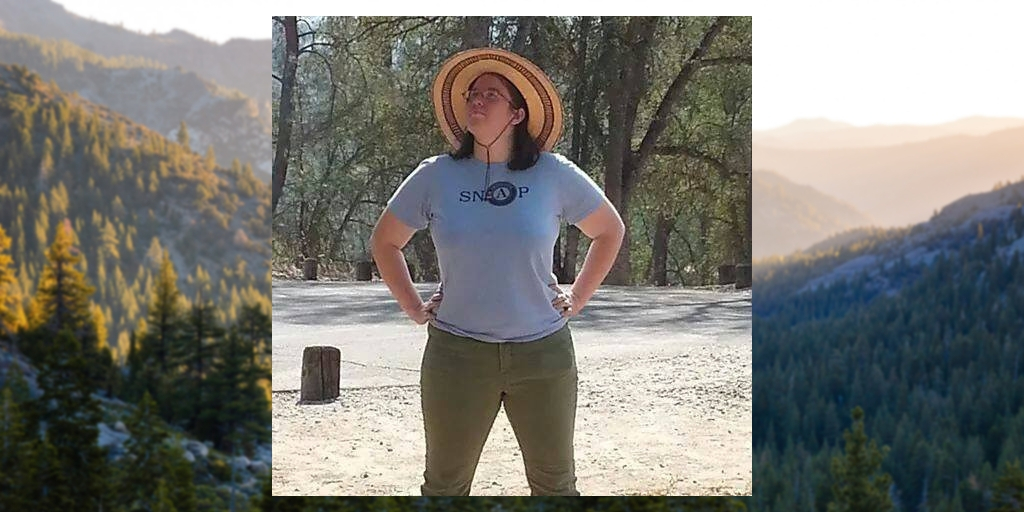
Taking a Leaping Jump
Justine Reynolds, Collaborative Forest Management Intern
Reflecting, I was always meant to be involved with Sierra Nevada forests and communities. My childhood summers were spent camping throughout the Sierra and Sequoia National Forests, particularly the Sierra’s Dinkey Creek Campground. I learned many things camping by that creek, but perhaps none more important than this: when leaping off a rock or in life, don’t look down – look toward the horizon.
While completing my undergraduate degree in Ecology and Evolutionary Biology at the University of California, Santa Cruz, I began searching for a post-college job. By chance, I found the Sierra Nevada AmeriCorps Partnership, and a host site had a Program Coordinator position, with duties including working with the Dinkey Collaborative Forest Landscape Restoration Project. The Dinkey Collaborative is a science-based planning group funded as part of the Collaborative Forest Landscape Restoration Program, which encourages science-based ecosystem restoration of priority forest landscapes. It seemed perfect, but this program would require living off a small stipend, moving to a rural town knowing no one, and figuring out how to make the most of a six-month term. I looked toward the horizon. I jumped.
My ultimately two-year AmeriCorps position taught me the value of service and working hard at work worth doing. Over the last six years as a facilitator, project manager and grant writer, I have worked in multiple capacities with collaborative organizations like the Dinkey Collaborative, the Sustainable Forests and Communities Collaborative, the Southern Sierra Integrated Regional Water Management Group, the Southern Sierra Prescribed Fire Council, and Yosemite/Sequoia Resource Conservation and Development Council.
I entered the graduate program at Oregon State University to become a better forest and resource manager. I learned that decisions are never made in isolation, large-scale collaboration is a necessary climate adaptation and mitigation tool, and partnerships can achieve socioeconomic, cultural and environmental resilience.
That was why a graduate internship with American Forests was an excellent opportunity. As co-chair of the Forest Climate Working Group, American Forests is a leader in climate-resilient forest planning. American Forest’s American ReLeaf and Community ReLeaf programs actively collaborate with local partners to address rural and urban forest management and tree equity. And American Forests is part of the CFLR steering committee, the program that funded my Dinkey Collaborative.
During my internship, I have already developed reports, briefs, and initiatives on forest resilience through collaboration. I am developing comments on programmatic changes in California State and Federal agencies that will fundamentally alter how forest restoration work is implemented. It’s an exciting time; and the right time for American Forests unique perspective.
Although my internship ends in fall, I look forward to cooperating with American Forests as a partner in my role as Projects and Program Development Manager for Yosemite/Sequoia Resource Conservation and Development Council. And in December I will be traveling to Chile for a week, to study forests as complex ecosystems with an international team.
Successful collaboration requires trust, a willingness to cooperate, a long-term perspective, and the capacity to change. In many ways, it’s a leap of faith. So, when collaborating, look toward the horizon. And jump.